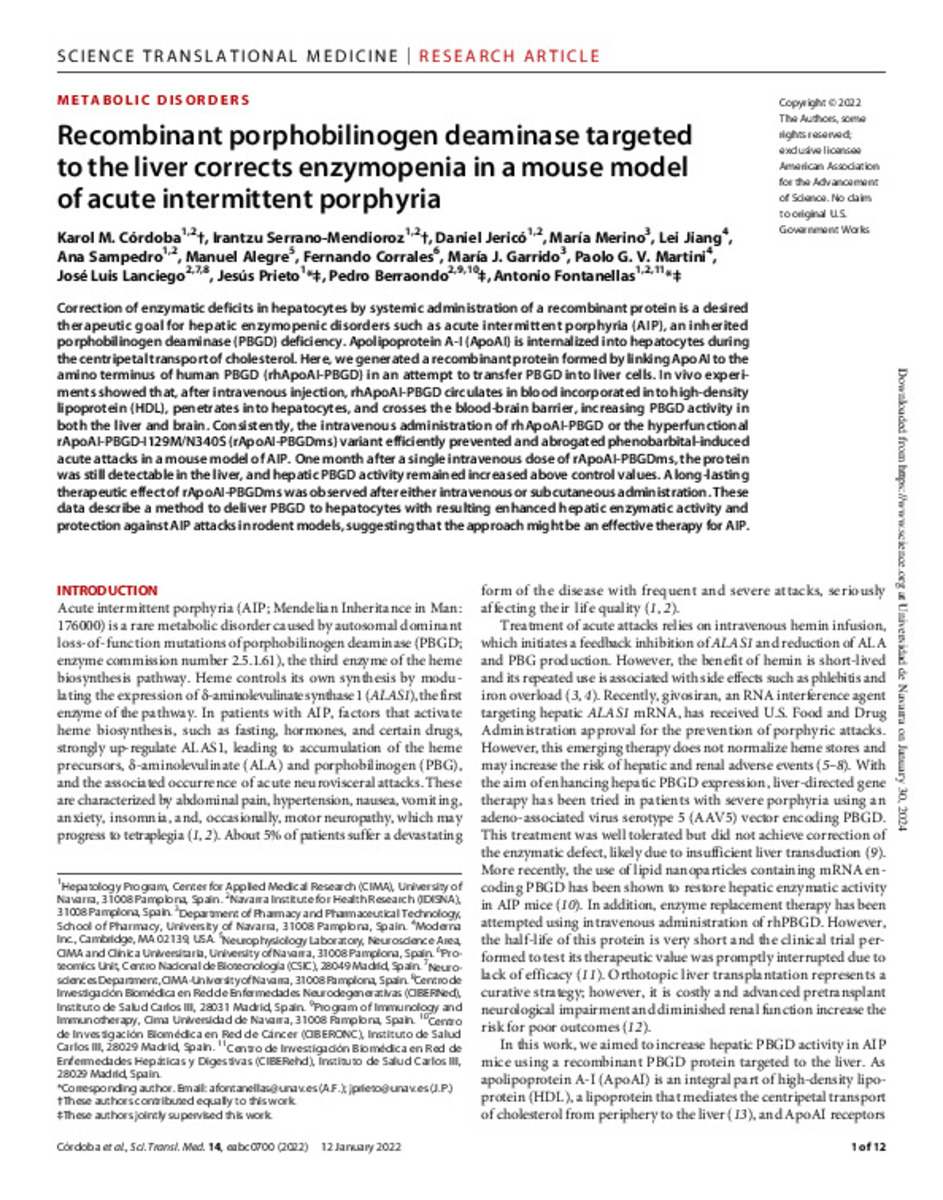Recombinant porphobilinogen deaminase targeted to the liver corrects enzymopenia in a mouse model of acute intermittent porphyria
Editorial note:
Copyright © 2022 The Authors, some rights reserved; exclusive licensee American Association for the Advancement of Science. No claim to original U.S. Government Works
Citation:
Fontanellas-Romá, A. (Antonio); Córdoba-Quiñones, K. M. (Karol Marcela); Serrano-Mendioroz, I. (Irantzu); et al. "Recombinant porphobilinogen deaminase targeted to the liver corrects enzymopenia in a mouse model of acute intermittent porphyria". Science Translational Medicine. 14 (627), 2022, 1 - 12
Statistics and impact
0 citas en

0 citas en

Items in Dadun are protected by copyright, with all rights reserved, unless otherwise indicated.








